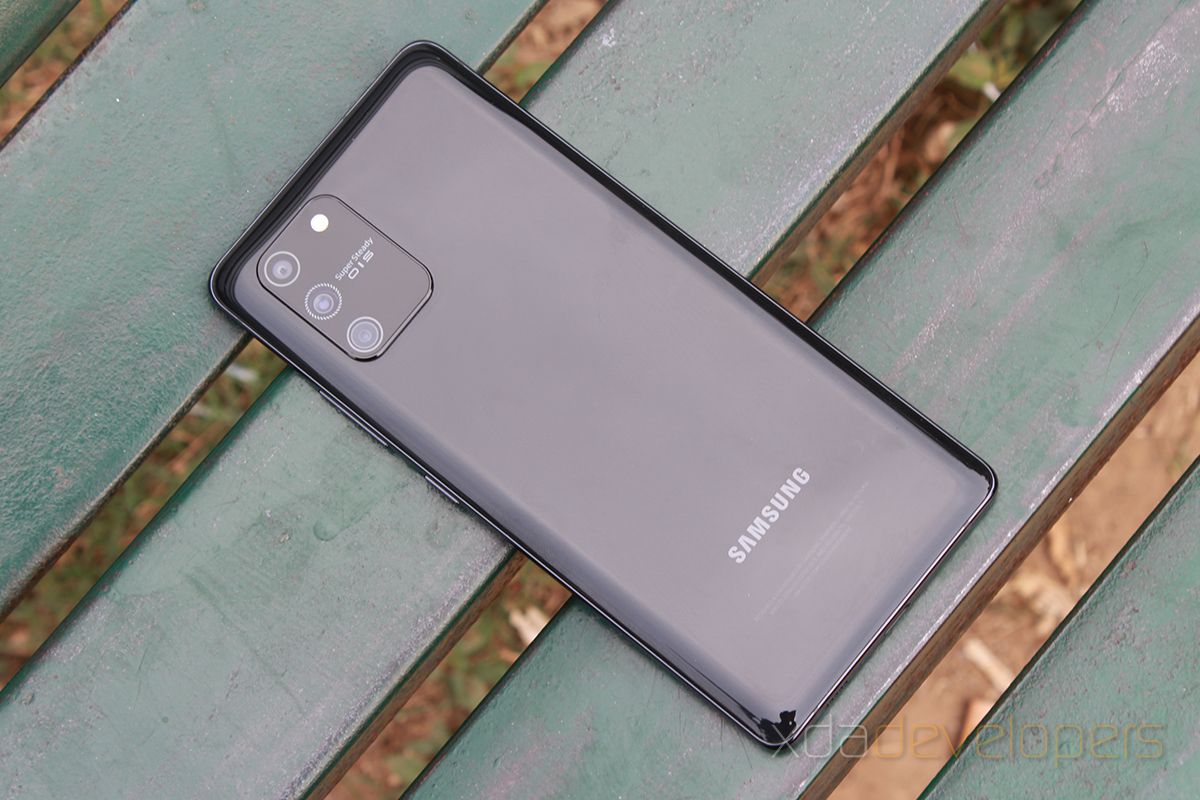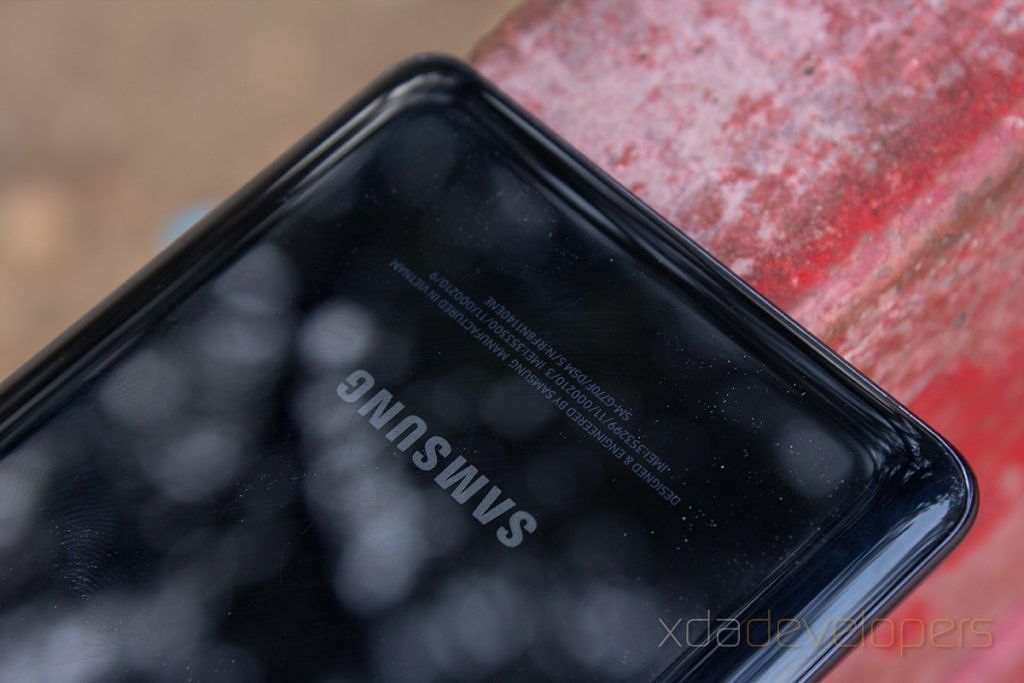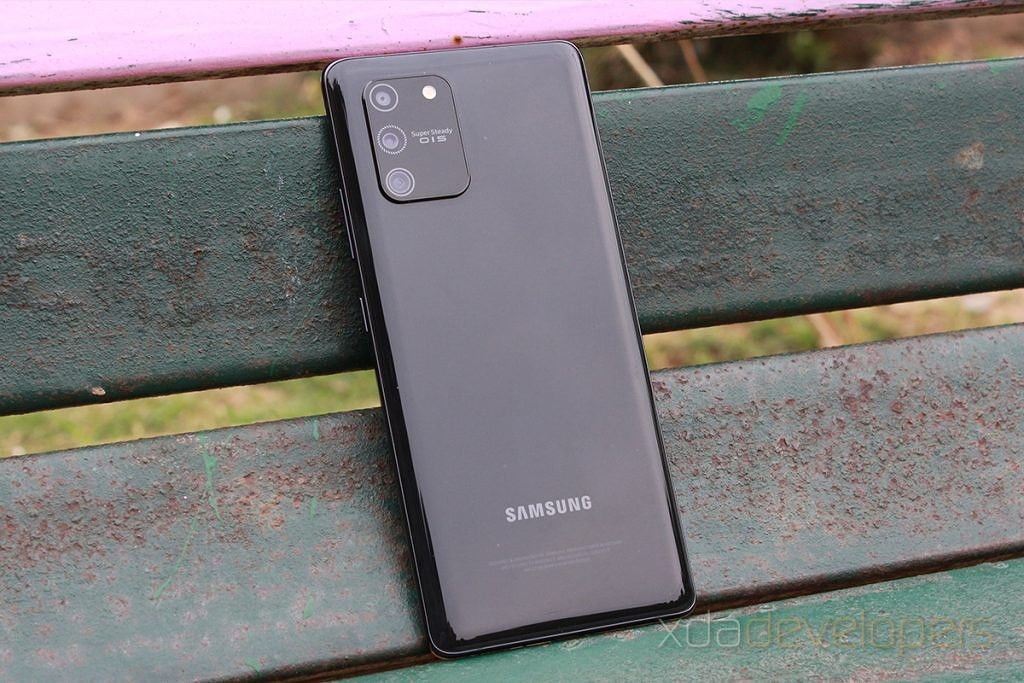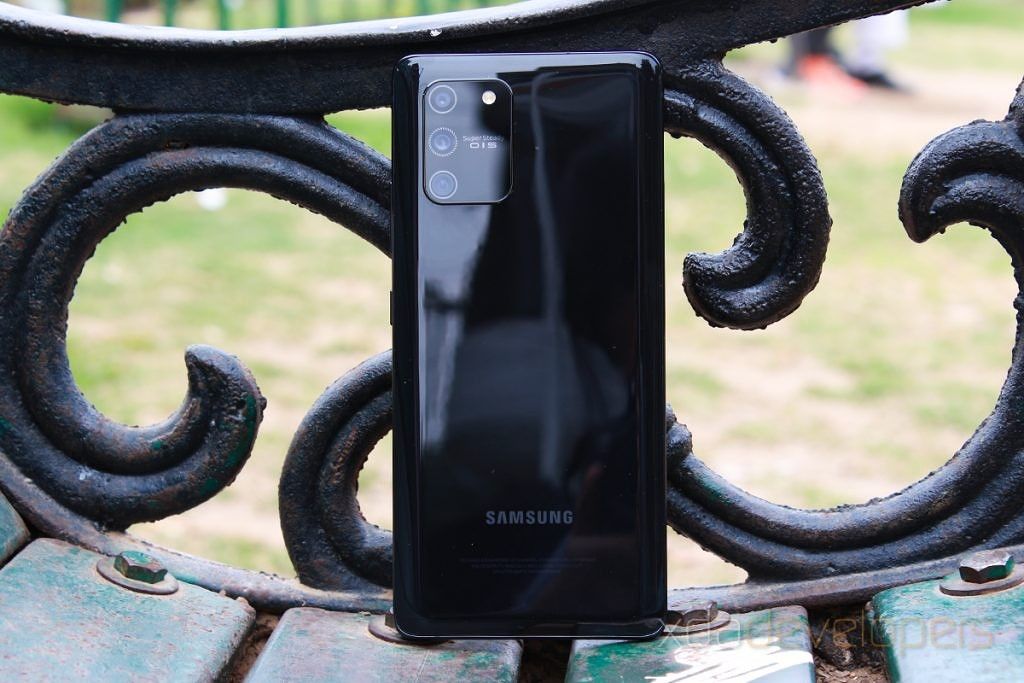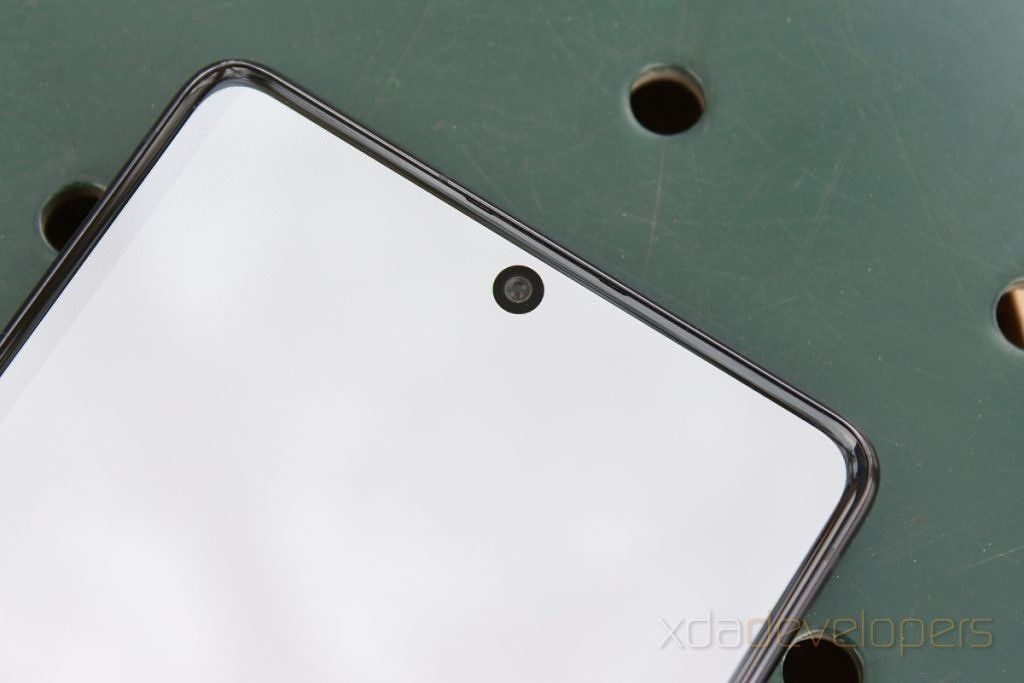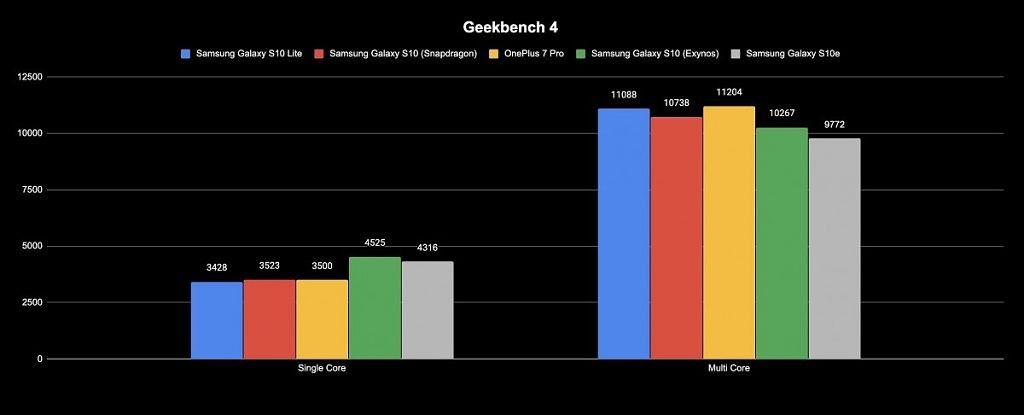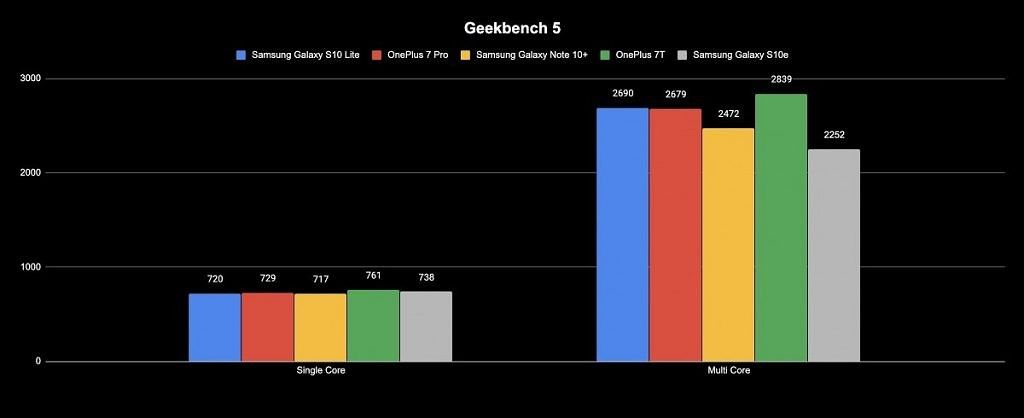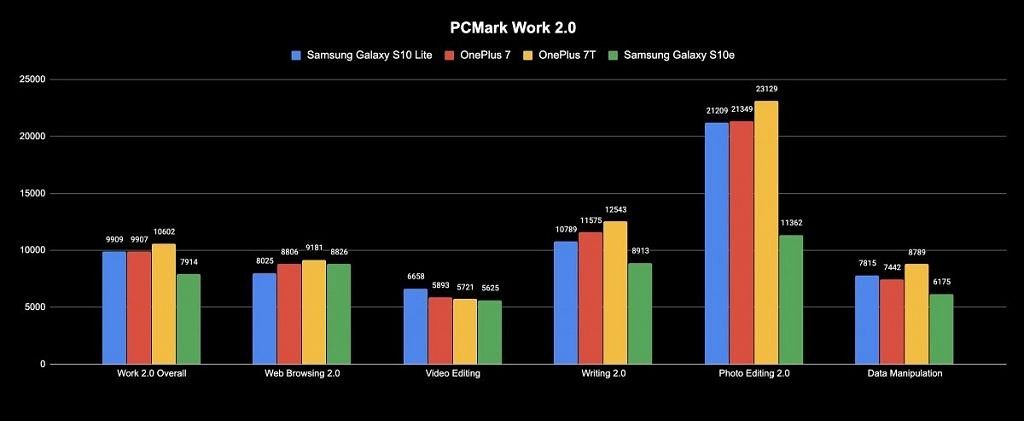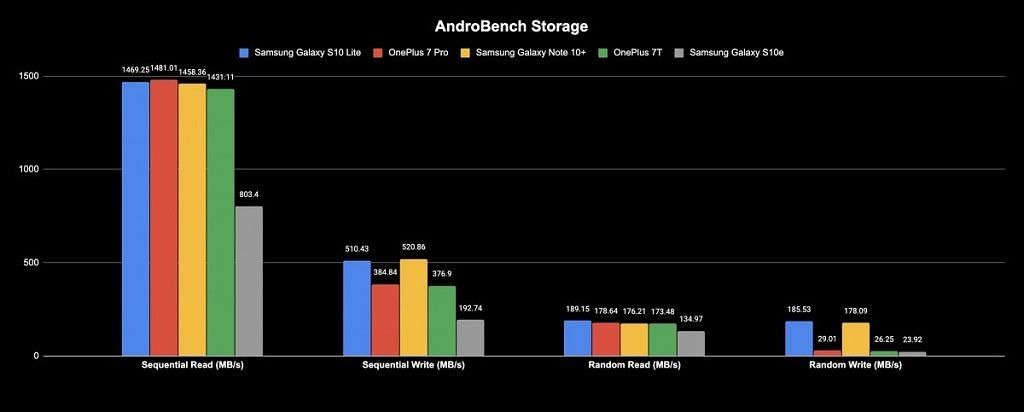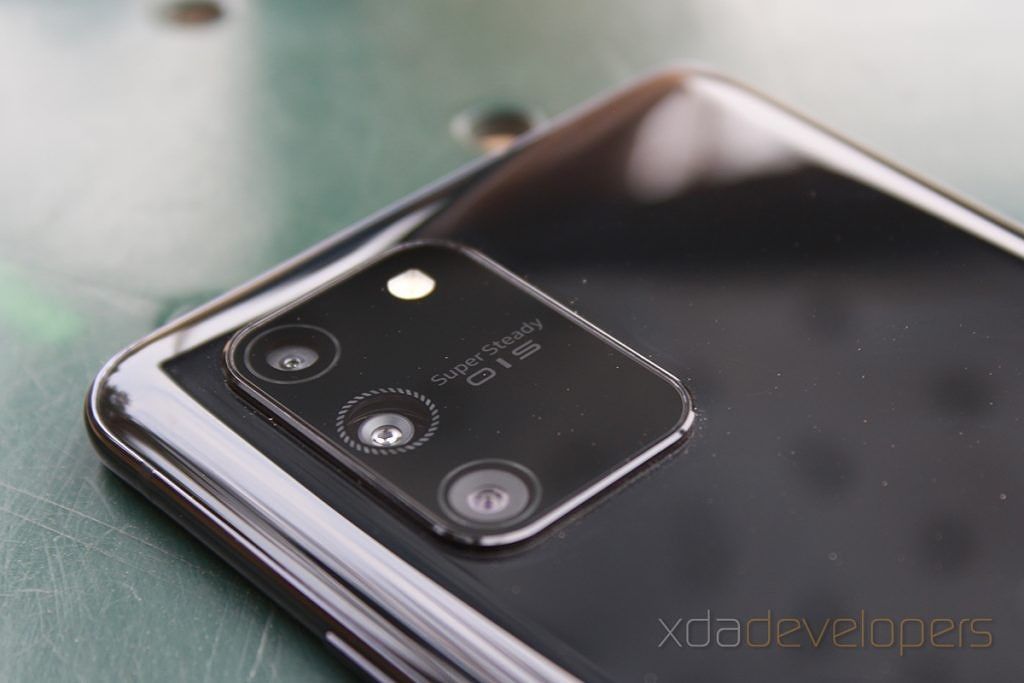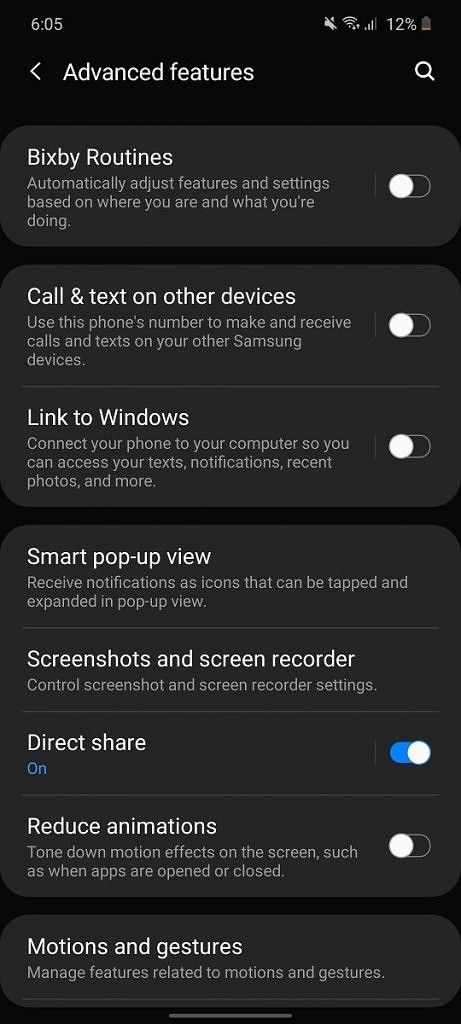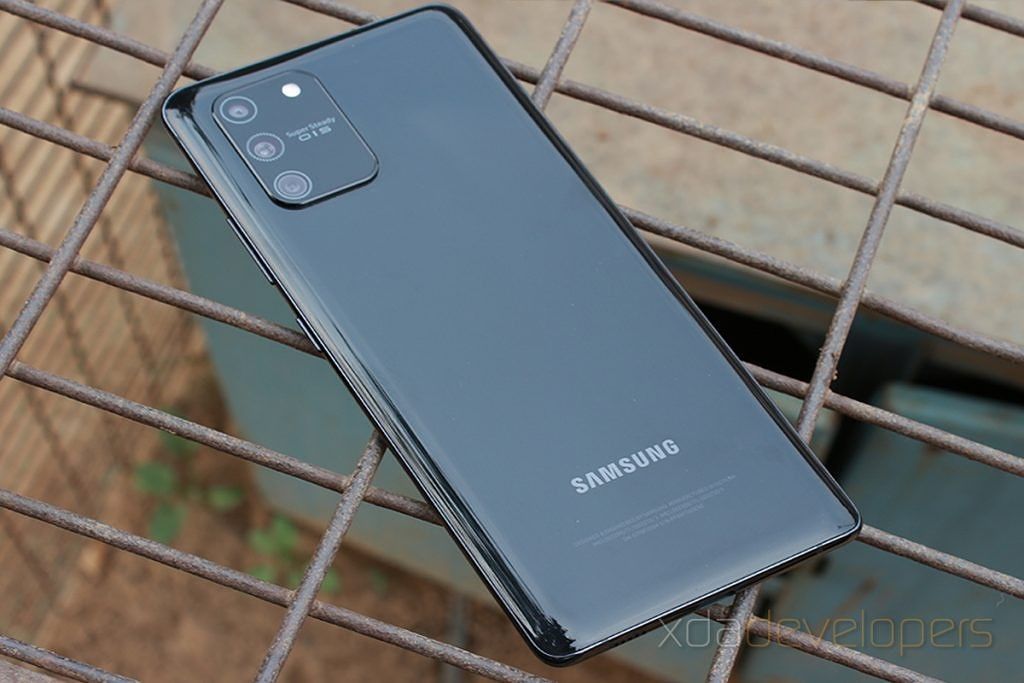Samsung's popularity in the smartphone industry isn't easy to fathom. Since 2013, it has remained unbeatable as the world's largest brand by the volume of shipments. In 2019, Samsung phones occupied four positions out of the top ten selling smartphones worldwide, and three out of these four smartphones belong to the Galaxy A series catering to entry-level and mid-range price segments. But despite its large portfolio of devices, only flagships have received Samsung's attention from an innovation standpoint. For several years, you couldn't easily tell two Samsung phones apart because they looked almost the same and the only conspicuous variables were the dimensions of the body and the screen – all of this owing to the lack of any alarming competition. But as Samsung faces continuous heat from Chinese OEMs, which have successfully dethroned it in the super-competitive Indian market and are now vying to do the same in Europe, it is has been reworking its strategy, especially in terms of the frequency of software updates and the value its phone offers. Until 2018, Samsung phones priced as high as $550 would offer much less as compared to competitors like OnePlus, Xiaomi, or Huawei. But in an attempt to retain its dominance, Samsung has lunged into the arena of flagship killers, pitting forward two new "Lite" flagships – the Samsung Galaxy S10 Lite and the Note 10 Lite, preserving the flagship' performance and features such as the camera and S-Pen but cutting down in terms of looks or material of bundled accessories.
Samsung Galaxy S10 Lite XDA Forums
The Samsung Galaxy S10 Lite and the Note 10 Lite were launched before CES 2020 and were also showcased by Samsung at the trade show. Our Editor-in-Chief, Mishaal Rahman, also had a chance to get quick hands-on with the devices at CES earlier this year. At starting prices of about $560 and $550 for the Galaxy S10 Lite and the Note 10 Lite, respectively, the two phones feel like pleasant surprises from camp Samsung - especially since its mid-rangers – Galaxy A71 and the Galaxy A80 are either priced in the same ballpark or even higher than this. Aimed at power users who would rather settle with a OnePlus, the phones are meant to offer the key features of the Galaxy S10 and the Note 10 with some cutbacks on the features that make these phones super-premium. From their marketing brochures, these Lite devices also seem like the best options for Samsung fans who want higher performance and fewer fancy features than what the Galaxy A series has to offer.
In this review, we're evaluating how Samsung Galaxy S10 Lite is a great option in the competitive segment of affordable flagships, the features it offers, and the corners cut by Samsung to reduce the price of the phone to nearly half of the Galaxy S10's launch price. Here are the specifications of the Galaxy S10 Lite:
Samsung Galaxy S10 Lite Specifications
|
Specification |
Samsung Galaxy S10 Lite |
|---|---|
|
Weight and dimensions |
|
|
Display |
|
|
Rear camera |
Triple Camera:
|
|
Front camera |
32MP Sony IMX616, F2.2 |
|
SoC |
7nm 64-bit Octa-core Snapdragon 855
Adreno 640 GPU |
|
RAM and Storage |
|
|
Battery |
|
|
OS |
One UI 2.0 based on Android 10 |
Samsung India loaned us a Galaxy S10 Lite unit in 8GB/128GB configuration. Besides these, the phone is also available in 6GB/128GB configuration in the U.S. while 8GB/512GB variant will launch in both markets soon. The following review is based on nearly a month of usage.
Design
The Samsung Galaxy S10+ was among the top 10 most sold smartphones of 2019 and we can credit its attractive design for this. However, instead of taking direct cues from the Galaxy S10's design, the S10 Lite looks more like the Galaxy S20 from both front and back. First, there's a large rectangular camera setup with three camera sensors arranged vertically unlike the Galaxy S10 on which the sensors are lined up horizontally. The boxy camera bump sticks out by about 2mm – if this bump bothers you, you can use a case. For your convenience, Samsung already includes a TPU case inside the box.
The back of the Galaxy S10 Lite is made of Samsung's "glasstic" material, a grade of transparent polycarbonate with the appearance of glass. While the glasstic back is lighter and not so prone to breaking as glass, it is more susceptible to scratches. So, the case I mentioned in the paragraph above appears really important to avoid any such damage to the back panel. Despite using a different material, the Galaxy S10 Lite gets the same Prism Black, Prism Blue, and Prism White color variants. Both the black and the blue variants of the phone are highly reflective and get smudged very easily. I would personally prefer the white since it adds a subtle gradient to the back panel.
The frame of the phone is made of metal and has a reflective surface. When it comes it its shape, the curvature of the frame makes it very easy to grip. Further, the slim profile and the light weight – thanks to the glasstic design for the latter – allow you to hold the Galaxy S10 Lite nonchalantly. The phone weighs only 186 grams and this one of its most appealing aspects. Therefore, despite the width and a massive display, the Galaxy S10 Lite fits very conveniently in the hand.
Despite its advantage in terms of weight, there are a few concerns that I have regarding the glasstic design. First, plastic is a better insulator of heat as compared to glass which means the internal heat produced by the processor is bound to be trapped inside and may cause some throttling. The metal frame, however, alleviates this issue to an extent and helps radiate the heat to the surroundings. The second concern is about the durability of the back panel. While the plastic back is unlikely to shatter with a drop, it can easily be bent inwards with some amount of force. Although you're unlikely to apply that kind of force intentionally, it does create some doubt about the back panel's ability to protect internal components in the event of an impact.
Samsung had retained the headphone jack on the Galaxy S10 series and this gave it yet another opportunity to troll Apple for the latter's choice of removing it from the iPhones. Six months later, Samsung itself renounced the 3.5mm jack with the Note 10 series along with the bragging right for supporting legacy audio output for Hi-fi audio enthusiasts. Quite unlike the Galaxy S10, the S10 Lite does not come with a headphone jack and the USB-C port at the bottom serves as the audio jack. To save you from the discomfort of buying a USB-C headset, Samsung bundles an in-ear type USB-C headset within the box. This headset, however, is not tuned by a renowned audio equipment manufacturer like Harman Kardon, which usually tunes the audio output of accessories sold along with flagship Samsung smartphones. Besides the USB-C port at the bottom rests a mono speaker and the primary microphone. The power button and the volume rocker are placed on the right side while the hybrid SIM tray can be extracted from the left side. There's no dedicated Bixby key but you can use the power button to summon Bixby. Lastly, there are four antenna bands along the metallic frame to ensure good network reception.
Other than the two issues mentioned above – as well as its tendency to get scuffed more easily than glass, the Samsung Galaxy S10 Lite feels like a decently premium device. The metal frame feels solid and does give you some sense of confidence about the phone's durability. To cut corners, Samsung has also avoided deploying any sort of protection against damage due to liquid or dust. The gasket inside the SIM tray can prevent liquids from entering but there is no official IP rating or recommendation on if it's safe to swim with the phone – so you probably shouldn't.
Right as you flip the Galaxy S10 Lite, you see another feature that sets it apart from the premium flagship - it's the display with a single hole punch camera in the middle.
Display
Samsung uses a 6.7-inch Full HD+ Super AMOLED display on the Galaxy S10 Lite. This one features a hole-punch in the center for the 32MP selfie camera. This allows the Galaxy S10 Lite to achieve an aspect ratio of 20:9 and a screen-to-body ratio of about 88%. Samsung also bills the HDR10+ support for the display. The display is surrounded by really slim bezels which add to the phone's image as a premium device. Personally, I prefer displays with flat edges since Android hasn't been very well optimized for curved displays (although Google is adding new buffer zones in Android 11 to prevent accidental touches) and I'm pleased with the fact that the S10 Lite's display is not curved along the longer edges.
Needless to say, the colors on the Galaxy S10 Lite's display are very punchy and appear quite striking without feeling overbearing or overwhelming in terms of saturation. The default color mode lends a yellowish tinge to the display, but you can switch to the Vivid color mode in the Display's settings. As a standard feature in Samsung's One UI, the color temperature of the display can also be tweaked to suit your preference. In terms of the color output, the display is quite close to the Super AMOLEDs used on the OnePlus 7T (review) or the Realme X2 Pro (review).
The display is very bright and outdoor legibility is not an issue, irrespective of the outdoor lighting conditions. The brightness of the panel is pretty much uniform but I did encounter a temporary burn-in while using the burn-in test in the Display Tester app. However, I haven't noticed any evident burn-in in the interface or while daily usage.
Although the Full HD+ panel has a 60Hz refresh rate, you wouldn't feel the need for a 90Hz display, unless you have been using a phone which supports a high refresh rate. The display also houses an optical fingerprint scanner as opposed to an ultrasonic sensor on Samsung flagships. If you use the Always On Display, you can tap on the fingerprint icon to unlock the phone while the screen is still off. In other cases, you either use tap-to-wake or lift-to-wake features to activate the display so that the fingerprint scanner becomes accessible. The fingerprint is slower than competing devices and might warrant multiple tries before you can unlock the phone.
While there is no notifications LED, the Edge Lighting feature can be used as an alert for incoming notifications besides the AOD. You can selectively choose the apps for which you'd like to notified with Edge Lighting. Although there are toggles for individual apps, you can't set the color of the notification alert.
Overall, the display is among the top highlights of the Samsung Galaxy S10 Lite. The bright and punchy colors make the everyday experience very engaging while the high contrast allows great visuals while gaming. My only peeve is the fingerprint scanner: although it doesn't perform poorly, it also does not perform exceptionally either. As for the burn-in issues, we hope to have more clarity over a prolonged period of usage and will update the review accordingly.
Performance
The next major highlight of the Samsung Galaxy S10 Lite is its performance since Samsung uses a Snapdragon 855 processor irrespective of the market of availability. Here are my thoughts on the performance of the Galaxy S10 Lite.
As mentioned above, Samsung uses a Qualcomm Snapdragon 855 mobile platform as the standard choice of SoC for the Galaxy S10 Lite in all of the markets. In contrast, an Exynos 9810 (not Exynos 9820) is being used as the standard choice for the Galaxy Note 10 Lite for all markets. It seems like Samsung is reevaluating its strategy with chipsets. In the past few years, Samsung flagships have had two different variants – one with Samsung's own flagship Exynos chipset for most of the markets while the other based on leading Snapdragon chipset limited to a few markets like the U.S. and Hong Kong. So, this decision to use a single SKU is nonetheless intriguing. Notably, Taiwan's TSMC beat Samsung to bag the contract for manufacturing Qualcomm's flagship chipsets for the second year in a row – Snapdragon 845 was manufactured by Samsung while the Snapdragon 855/855+ and the Snapdragon 865 are manufactured by TSMC. Whether these are linked to Samsung's choice of chipset for the Galaxy S10 Lite is something we're not sure but there is surely some room for speculation.
Coming back to the performance of the Galaxy S10 Lite, it comes with 6GB and 8GB RAM variants to complement the Snapdragon 855 SoC. Since the Snapdragon 855+ offers a minor upgrade in terms of CPU and GPU performance over the Snapdragon 855, Samsung's choices of the latter could have proved more economical. Nonetheless, the Snapdragon 855 is also a very powerful chipset and capable of meeting all demands of a flagship smartphone.
We ran the standard stock of synthetic benchmarks to compare the performance of the Samsung Galaxy S10 Lite quantitatively with other popular competitors in this price segment.
Starting with Geekbench, we have both Geekbench 4 and Geekbench 5 scores for single-core and multi-core CPU performance. The choice of devices for this comparison was based on their availability. In Geekbench 4 scores, the Galaxy S10 Lite scores in the same range as the Galaxy S10 with Snapdragon 855 as well as the OnePlus 7 Pro (review), which also uses the same chipset. In comparison, the Exynos 9820 variants of the Galaxy S10 and the Galaxy S10e (review) have higher single-core scores but lower multi-core scores. For context, the Exynos 9820 comes with two M4 Mongoose cores clocked at 2.73Ghz, two performance cores based on ARM's Cortex-A75 at 2.42GHz, and four efficiency cores based on Cortex-A55 clocked at 1.95GHz. In contrast, Snapdragon 855 features eight Kryo 485 cores in a 1+3+4 configuration with clusters clocked at 2.84GHz, 2.42GHz, and 1.78GHz.
In Geekbench 5, we see a similar pattern with the Galaxy S10e (Exynos variant) performing better than the Galaxy S10 Lite and the Note 10+ (Snapdragon variant) in the single-core test and lower in the multi-core test. The OnePlus 7T powered by a Snapdragon 855+ SoC scores significantly higher in both tests.
Moving on to PCMark Work 2.0, the Samsung Galaxy S10 Lite with Snapdragon 855 is consistently better than S10e with Exynos 9820 – except in the web browsing test – and performs almost on par with the OnePlus 7 Pro (our graphs erroneously mentions OnePlus 7 Pro as OnePlus 7). As expected, the OnePlus 7T still leads the competition all the way here as well.
Moving on to the graphics-intensive benchmarks – 3DMark and GFXBench, we see similar trends. The Adreno 640 GPU on the Galaxy S10 Lite leads the Galaxy S10e's Mali G76 GPU. The OnePlus 7T outputs better performance in all tests due to the overclocked Adreno 640.
In terms of storage, the Galaxy S10 Lite features a UFS 2.1 storage but it surprisingly offers the same performance as the OnePlus 7 Pro, OnePlus 7T, and the Galaxy Note 10+, all of which utilize UFS 3.0 storages. Notably, Samsung Electronics is the world's leading producer of NAND storages and also sells them to other OEMs and this could have allowed the Korean smartphone giant to optimize the storage performance despite the use of older technology.
Even while gaming, the Galaxy S10 Lite puts up a phenomenal performance and shows no signs of slowing down despite heating. Samsung also has a Game Launcher feature which is supposed to optimize gaming performance by prioritizing games over other processes. While the Game Launcher feature is exciting, you don't get a lot of manual controls to clear RAM or any better way to respond to incoming messages. On top of that, the app also has ads for games which makes it even less desirable.
Looking at the benchmark scores, we can safely conclude that Samsung's choice of using Snapdragon 855 on the Galaxy S10 Lite irrespective of the region will impress users expecting a flagship-level performance from the phone. The phone does live up to every expectation in terms of performance.
Camera
Samsung is using a triple camera setup on the Galaxy S10 Lite and it includes a 48MP Sony IMX586 as the primary sensor, another 12MP wide-angle camera with a 123º FOV, and a 5MP macro camera with autofocus. The primary camera also comes with EIS + OIS in videos. The Sony IMX586 is among the most widely used and trusted camera sensors of 2019 and while a 64MP camera sensor would turn more heads in 2020, the 48MP Sony sensor easily meets the demanding expectations of smartphone photography enthusiasts. With 4-in-1 pixel binning, the sensor captures 12MP images by default even though you can toggle the "4:3H" option from the menu bar in the Camera app to click images in 48MP.
As expected, the primary camera on the Galaxy S10 Lite displays great acumen for details and presents shots that are well-focussed, contrasted, and – to a great extent – color-accurate. Pixel binning also allows for well-illuminated shadows and crisp highlight portions. Indoors, the sharpness of the images is lowered but you can still get some good shots usable for social media. Take a look at some of the images taken with the Samsung Galaxy S10 Lite in the standard i.e. 12MP mode.
In contrast, the 48MP images have a lot less light and especially poor shadows. Furthermore, the 48MP images are only a tad bit more detailed but only if there is ample exposure. In low light, you would be better off sticking to the standard mode. Take a look at some of the samples taken in the 48MP and their comparison with the same frame capture in 12MP images.
12MP images on the left, 48MP images on the right
Moving on to the wide-angle camera, it increases the expanse of the viewfinder and outputs images that are ready for social media. Images taken with the wide-angle camera appear more saturated as compared to the primary camera making them more attractive from the overview. However, these images tend to lose sharpness as you zoom in, thus limiting their usability as pro-quality shots.
On the front, there's a 32MP camera nestled in the hole punch. While its field of view is fixed at 80º, Samsung's camera offers a faux depth of field which is narrower (68º) and focuses on a single person. You can switch to the wide mode to click images at full width using the toggle right above the shutter button. The selfies clicked with the phone are detailed but the Camera app still smoothens the skin even without a beautification mode. In portrait mode, the background blur has accurate edge detection and the strength of the blur is optimized to give the impression that a portrait lens has been utilized for the images.
In terms of video, the Samsung Galaxy S10 Lite supports 4K capture but only at 30fps. The OIS comes into play while capturing videos using the Super Steady mode, although the resolution is capped at 1080p. As you can see in the two samples below, the Super Steady OIS offers pretty good video stability and the automatic exposure adjust takes place in real-time while recording the clip. The quality of the video is, however, not very satisfactory even with ample lighting.
Additionally, the Galaxy S10 Lite can also capture slow-motion videos at 120fps @ 1080p and 240fps @ 720p. Below is a sample of 240fps slow-motion video (called super slo-mo in the Camera app):
User Interface - One UI 2.0
In late 2018, Samsung overhauled the older Touch UI interface significantly with bigger, rounder, and more vibrant design elements, and a consistent design language. The name of the UI was derived from its ability to facilitate single-handed usage in spite of the increase in screen size. One UI was further improved in late 2019 but this time around, the improvements are more functional than visual. The Samsung Galaxy S10 Lite features One UI 2.0 based on Android 10 out-of-the-box. Here are the features that I find the most useful:
Android 10 navigation gestures
Although many manufacturers had implemented full-screen gestures for navigation much before Google formally did on stock Android, Samsung clung to a more primitive approach in which the navigation buttons were replaced by three bars and instead of tapping on the buttons, you had to swipe upwards on the bar corresponding to the respective button. With the One UI 2.0 update based on Android 10, Samsung has added intrinsic support for the new navigation gestures. The phone responds very promptly to gestures and you can change the sensitivity of the back gesture just like stock Android. Additionally, you can also disable the gestures over the keyboard so they don't misinterpret swipe typing as a navigation gesture. This is a very simple yet thoughtful addition by Samsung.
Edge panels
One UI 2.0 comes with Edge panels which are menus offering quick access to apps and features. You can switch on multiple Edge Panels, each of which can be designated with a specific task. For instance, you can access apps, tools like Compass, Clipboard, Weather, Reminders, Tasks, and much more from Edge Panels. Not just that, you can also download third-party Edge Panels from the Galaxy Store and you can access the different active Edge Panels by swiping left or right across them. This flexibility makes them a feature that improves productivity significantly.
Digital Wellbeing
Samsung's One UI 2.0 comes with Google's Digital Wellbeing and parental control features. Unlike other certain manufacturers (such as Xiaomi and Realme) who have just added Digital Wellbeing with an AOSP interface to their custom Android skins or like Huawei which has designed its own Digital Balance feature to bypass Digital Wellbeing, Samsung has taken the initiative of redesigning the interface to match One UI 2.0 and has even added its own features like Work Time and Me Time modes which lets you select two different scenarios in the Focus Mode.
Smart select
The smart select feature in One UI lets you capture a portion of the screen instead of capturing the entire screen and then cropping out a specific part. Besides selecting a regular rectangular area for the smart select feature, you can also choose an oval section of the screen, create a GIF from a screen recording, or take a temporary screenshot to be used as a floating overlay.
Besides, when you're cropping a screenshot, the interface automatically suggests you to crop into shapes like rectangles so you don't have to align the edges manually.
Power saver
Samsung's One UI 2.0 features an intelligent power saver that automatically chooses to limit power consumption based on your usage patterns and the time of the day. There are three modes available by default –
- Optimized, which focuses on performance
- Medium power saving, which is an optimal point between power-saving and performance
- Maximum power saving, which prioritizes battery-saving over performance
Additionally, you can choose to put apps to sleep selectively when they are not being used. Likewise, you can also assign apps that can never be forcefully sent to doze mode.
Link to windows and other Samsung devices
You can link your Samsung smartphone with other Samsung devices to send and receive calls and text from the device. Microsoft's Your Phone Companion apps come pre-installed on select Samsung phones as a feature. You can also link your Samsung account to any Windows 10 computer to be able to sync media between the device and the computer, view and manage notifications as well as text and other forms of messaging.
Bloatware, NOT!
All of the features listed above are really useful but Samsung phones also come with many other apps pre-loaded. While Samsung's mid-range phones have many more unwanted apps, premium phones such as the Samsung Galaxy S10 Lite come with bloatware from Microsoft as well as unwanted Samsung apps like Galaxy Wearables, Samsung SmartThings, Bixby, etc.
Battery
The Samsung Galaxy S10 Lite features a 4,500mAh battery which suffices for a day of usage per full charge. Like the example below, the Galaxy S10 Lite consistently outputs almost 7 hours of screen-on-time per charge with moderate usage and even a couple of hours of playing games like PUBG Mobile, Fortnite, COD Mobile, etc. These figures vary with variables like screen brightness, duration of use of the vibration motor, mobile network strength, etc.
For charging, the Galaxy S10 Lite supports fast charging at up to 45W. However, you get a 25W charger in the box and will have to buy the 45W charger separately. Using a 25W charger, the Galaxy S10 Lite can charge from 10% to 80% in 40 minutes and fully in a total of 65 minutes. It also supports charging at up to 18W via charging bricks that support USB-PD protocol but the charging time will be relatively longer.
Connectivity & Security
The Samsung Galaxy S10 Lite comes with LTE-Advance, Bluetooth 5.0 and BLE 5.0, and dual-band 802.11 a/b/g/n/ac Wi-Fi. Additionally, there is NFC for payments and Samsung's proprietary MST for tokenized card payment using Samsung Pay. Notably, the MST technology tricks POS machines into believing that a card with a metallic strip has been swiped when the phone is touched to the machine. More importantly, it also works with older POS machines and is not limited only to those that support Tap-to-pay.
For positioning, the Galaxy S10 Lite supports GPS, GLONASS, Galileo, and BDS positioning systems. While the Samsung has enabled dual-frequency GNSS on the Galaxy S10 series, nothing is explicitly mentioned for the S10 Lite.
For security, the Samsung Galaxy S10 Lite features a software-based face unlock beside the optical fingerprint scanner. Like a whole lot of other Samsung phones, it also supports Knox e-fuse that is primarily meant for IT admins to limit fiddling with enterprise devices. So if the user tries to root the phone, a physical eFuse is burnt, and this not only registers that the phone may have been rooted but also prevents further firmware OTA updates.
Samsung Galaxy S10 Lite – Feels a lot like a Lite Galaxy S20
The Samsung Galaxy S10 Lite satisfies your desire of owning a premium device without digging as big of a hole as the Galaxy S10 or S20 would.
In many ways, the Galaxy S10 Lite feels more closely related to the Galaxy S20 series than the S10 series, especially due to its design elements. Samsung's decision to have a single processor variant globally can pan out well for users who abstain from buying Samsung phones typically due to Exynos chipsets. Besides offering higher performance, the Snapdragon chipset also brings support for unofficial Google Camera ports for the chipset.
Even when you look at the Galaxy S10 Lite in absolute isolation from the real Samsung flagships, it looks, feels, and performs very promisingly. Besides its appearance, premium feel, and performance, the phone also gets some interesting set of cameras. Additionally, the charging support for up to 45W is another fantastic feature.
Samsung Galaxy S10 Lite XDA Forums
Lastly, for anyone who likes Samsung phones and has been waiting for a rightly priced premium Samsung smartphone, the Galaxy S10 Lite is a no brainer. It is a great alternative to highly popular devices like the OnePlus 7T. Meanwhile, the Galaxy Note 10 Lite may not be as powerful but it brings along the S Pen and its features at a much lower price.
You can buy the Samsung Galaxy S10 Lite using the following links:
India – starting at ₹39,999USA – starting at $573.99

